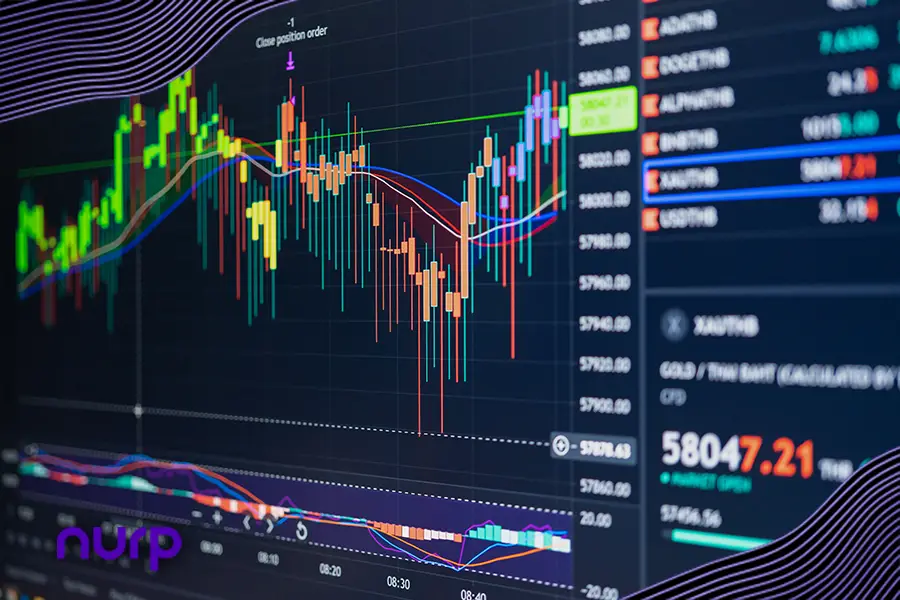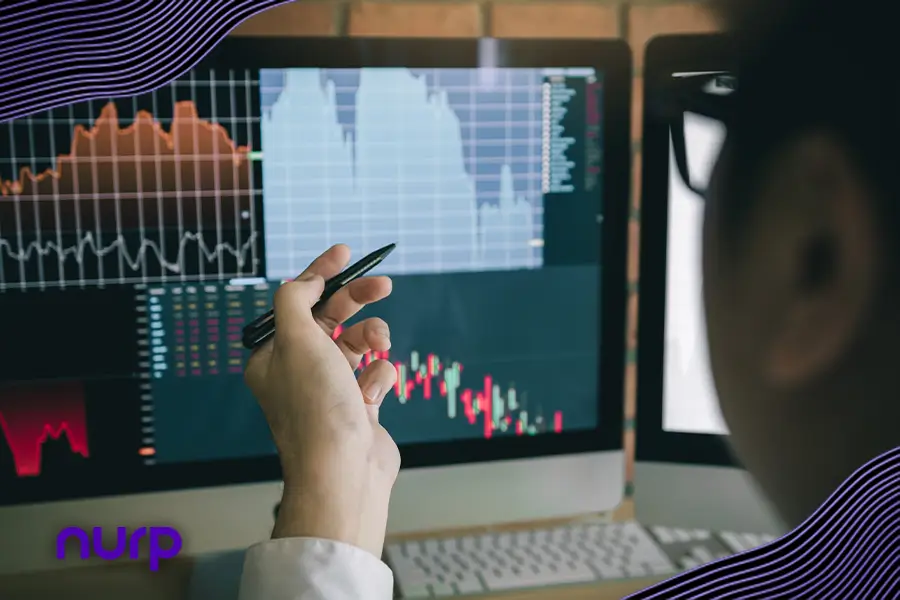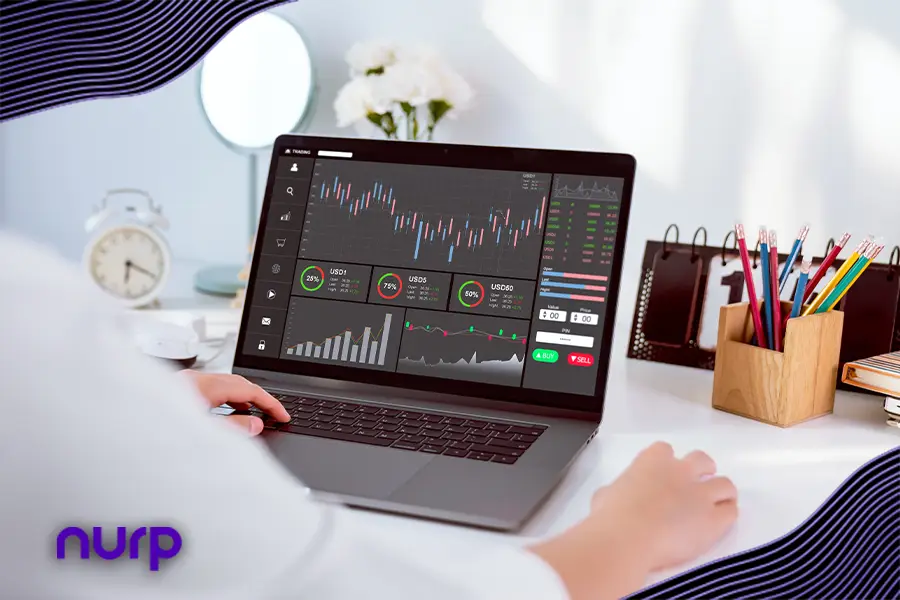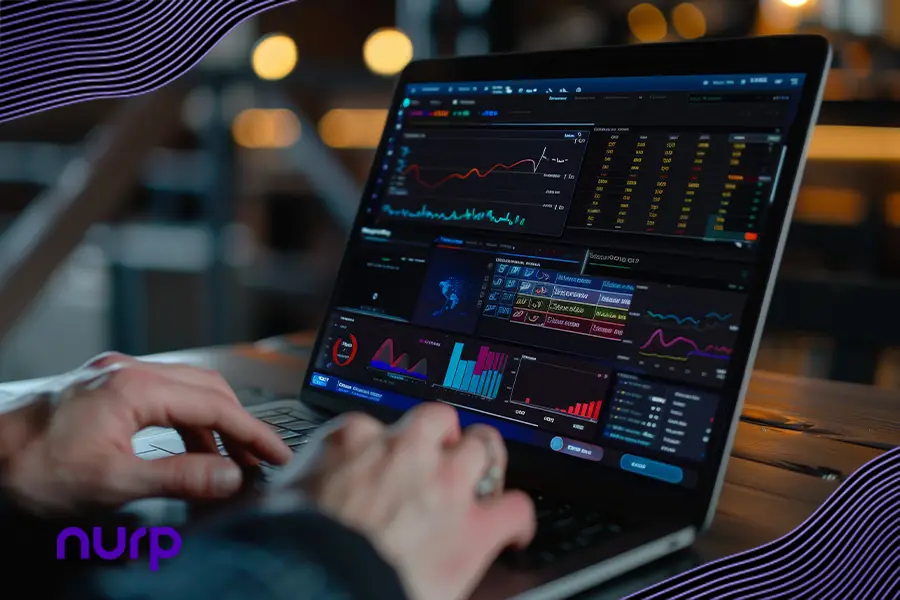Matt: “With cutting of the interest rates, that’s just going to insinuate a large number of people to try to take on more capital, more debt because rates are low. People want to feel that they can get the best out of their loans. But not only that, loaning from bank to bank, Federal Reserve, and so forth. Them cutting the rates will allow all this new capital to flood in, which they call cheap money. And can you actually see the stock market and all these equities pushing even higher? I mean, I feel like every time we say that we’re coming close to the end, we bump up a new high. I mean, I don’t understand how much longer this can happen.”
Abhay: “Yeah, I think there’s two big factors at play. Firstly, like I was saying, it’s always what the next thing is, so 6 to 9 months. So for instance, if the Fed starts cutting rates, however, they say that we’re not certain we’re going to continue this trend, and in a few months from now it could change, then the market will be quite uncertain. But if the FED says that we’re going to cut rates and we’re going to continue cutting rates, which is what we’re saying, which is what they’re saying right now, then the market will be more certain and investors will be able to invest with more confidence. The other thing that happens is with liquidity. So, historically, we’ve actually seen a crash on the first time they cut. And that’s been the start of, you know, a small brief recession if you will. But after that, usually the FED just injects more liquidity into the market, especially as we head into an election year, 2024. Right, they’re not likely to risk a market breakdown this year. So if we do see a liquidity crash straight on the first cut, then I think what we’ll follow would be a v-shaped recovery with the FED injecting more money into the system.”
Matt: “Wow. So lower rates, debt spiral, more liquidity to the markets, people taking on more loans cause they can get a lower rate. This could potentially push markets higher. But what does this mean for our currency as a whole? Because if we continue to do this, we obviously continue to debase our currency and inflate its value away from whatever is left. What do you feel is the exit here? What do we do? ‘Cause I know that we have 17 trillion, I believe, of debt that matures this year. I have to double-check that, but I know a large portion of our debt matures and we have to pay it, which was borrowed at 0%. So now I think we’re headed into a debt spiral. So we borrowed a large amount during COVID, and then it matured. Now I don’t understand what this means for the dollar.”
Abhay: “Yeah, it’s a really good question. I think ultimately fate is set in a way because the only real solution to this problem is austerity, which is that the government cuts down spending. Because even historically, I mean, there’s some counter arguments saying that they can always raise taxes. But if you look at the history of the United States, there’s never been a time regardless of where the tax rate is at where the government has collected more than 20% of GDP as tax. Because what happens is if you raise tax, the incentive for working harder and making more money also goes down. So it’s a bit of a conundrum. So if you’re not going to collect more than 20% of GDP, then the solution is either you find a way to increase productivity and increase GDP tremendously, or you cut down spending. Now, on the spending side, it’s also optics because the US government has not spent less than what they’ve collected in tax since 2001. So it’s been more than 20 years now. So that trend is not likely to change because if they cut down spending and take away all these programs and incentive social services or reduce defense spending, etc., then they’re not likely to be voted in again because it works against the everyday people. So I think spending will just continue to increase. And if that happens and they’re not able to collect nearly as much, we keep going into this spiral where the debt just becomes larger and larger, and the currency keeps getting debased, and the gap between the rich and the poor keeps widening, which is unfortunate, but that’s… I feel like there has to be some type of monetary reform because if we really just keep up these malpractices with monetary and fiscal policies, I just see our currency just becoming like Zimbabwe. Obviously, that’s an extreme example, but in due time, if you kept these practices, it’s inevitable that that would be the case. Now, with all of this being said, I don’t want to spend all of our time here. I would actually use this to then pivot and highlight how important it would be to get an asset that’s uncorrelated to these certain conditions.
Matt: Now, what do you feel are good alternatives for people and investors? And of course, this is not investing advice to look for when trying to find uncorrelated assets.”
Abhay: “Yeah, I think it comes down to really what their level of knowledge is and how much time they have on their hands to be involved in the financial markets. Because as you know, the markets move very quickly with news coming every day. And now there’s a war in some corner of the world and there’s a crash that no one expected. So, you have to be really prepared in advance and have… need to have the time to be able to invest if you do want to take investing in stocks or crypto seriously. However, if you’re more passive, then I think uncorrelated in the sense of just a safety, gold is good to have for a small portion of your net worth. Bitcoin, obviously being digital gold, I think that’s the best form of scarce currency that we’ve ever seen because the only thing that’s truly scarce, it’s programmed to never be more than 21 million. And even though, yes, there’s arguments that the community can vote for more supply, but that’s not going to happen because it’s against their own incentive. Someone holds 10 Bitcoin, they’re not going to want to increase the supply. They know it’s going to be worth less in fiat currency. So, I think Bitcoin is good to have to hedge against inflation and fiat debasement. I think it’s the best hedge against fiat debasement. And then looking at other avenues such as algorithmic trading because the problem with financial, general financial investing, whether it’s stocks or crypto, is that they’re cyclical. So, the markets go through these large cycles of multi-year up-only or multi-year down-lately. And that can be quite draining for an inexperienced investor if they have a large amount of money invested. And it’s all about timing. Whereas with algorithmic trading, with Forex specifically, where the movements are quite small relative to other asset classes, and then also it’s not cyclical, so it’s more stable in terms of a return that you can expect. I think that is a great avenue as well, which is why we’re putting so much focus towards it.”
Matt: “And speaking of Bitcoin and gold, gold of which just hit another high as of pretty recent, I think it’s like a little over $2,000, I don’t know exactly to the mark. And then Bitcoin, we all know, just cracked a new high. Do you, where’s your stance on Bitcoin? How much further do you think we can push? And do you think this is some type of fake out before we have a nice pullback from here?”
Abhay: “I think with the ETFs now coming into play, this cycle I believe will be different. Historically, we’ve had these four-year cycles, so a three-year bull market, one-year bear market. And you know, a lot of people seem to say that that will continue and it’s not wise to say, ‘This time is different.’ But I think with ETFs and institutions now really in the game, I do believe this time will be different. So, my personal view right now is this cycle will be shorter than your traditional four-year cycle, and we will see more hype that comes in quicker, with a crash. So again, not financial advice, we don’t see the future. No one’s seen the future. But I think probably towards the end of this year or early next year, we will see a top in the market because once the halving happens and more interest comes in the space and the euphoria comes in, I think things will move quicker than people expect.”
Matt: “Can you actually educate me on this ETF? So, in my head, an ETF I think, and correct me totally if I’m wrong here, I think it’s a little bit negative for the market, considering that it would not be physical like delivery of how ETFs… these are derivatives of Bitcoin. So, there’s not really a buy of the supply happening. It’s just a way to dilute it and create fake facades of how much Bitcoin could really be out there because they’re just printing up derivatives of it. Is that far off or where am I here?”
Abhay: “So, you would have been… I would say correct before when… So, before this year, we had derivative-based ETFs, futures ETFs for Bitcoin. But this year was the first time in Bitcoin’s history when the SEC has approved a spot ETF. So, what we have right now in the market, it is a spot ETF where the ETF provider has to go buy the underlying Bitcoin. It’s very much like GLD, for instance, with gold, where even though you don’t physically own gold, the ETF provider owns it on your behalf, and you have an ownership certificate of it.”
Matt: “Yeah, considering they’re completely algorithmic trading, ethical, and it’s 100% factored. Okay, awesome. All right. Now, you also touched on, aside from gold and Bitcoin, you said algorithmic trading. Now, I want to get a little bit more information on your involvement. How do you see algorithmic panning out in the future? And how long do you think it’s been around? Because from my understanding, institutions have been using algorithmic trading for a very long time, and now it’s just being readily available to retail and retail investors.”
Abhay: “Yeah, I think it has been around for a while. However, with institutional… with large players, it’s more often than not high frequency. So, that’s slightly different to what we’re doing, which is mid-frequency. You know, with high frequency, they tend to move in seconds or microseconds, and that’s the average trade duration. But with us, we tend to be in the 1 minute to 15-minute sort of timeframe. And I think with algorithmic trading so far, it has been quite inaccessible to retail. It’s only been for large players, institutions, and they haven’t released that software to the public. And so, that’s what we’re trying to disrupt.”
Matt: “I just had a really good interview with one of the clients utilizing the software, and I told him, I was like, technology has expedited learning curves. And in fact, in this case, it’s completely expedited the learning curve of becoming an actual trader. People these days utilizing software don’t actually have to know how to trade. I know several people using more than several people using the software that don’t even really know how to place a trade nor exit one. And you have, you know, everyday people just buying software and trading for them. Do you see this being the theme moving forward for the overall trading and investing edge for retail people? Because there is a large crowd of people that take pride in the fact that they manually trade. Do you see that becoming a little bit distinct and prehistoric in its dating?”
Abhay: “Yeah, that’s a great question. I think there’s two sides to it. The first side is if you really think about what a competent trader does, they look at certain factors before placing a trade, but it’s really a decision-making process in their head. It’s in a way a rules-based system in their head. Now, with experience, that’s inherent to them because that’s their profession. That’s what they’ve done. What we’ve done is we’ve taken that rules-based decision-making and packaged that into software. And everyday investors can get that level of competency of a competent trader by just using the software. I think with advancement specifically in technology and then more so even AI, I think this trend will only continue to strengthen in the future. And over time, we’re going to be competing with more and more sophisticated algorithms, which is going to make the value proposition of a manual trader, I think, will slowly decline. And it will be a more difficult game for someone to manually trade on the shorter time frames at least. I actually just believe that it’s becoming a little bit unethical. Like people have so much to do, and trying to sit here and manually trade, one is not guaranteeing you’re going to be profitable. So, you’re spending a lot of time where you could actually be working, which is 100% profitable, you know, considering you have a good job or a business. You’re guaranteed x amount of money. But when you’re manually trading, you’re not guaranteed anything, and you kind of have to make your ways. So, there’s tons of risk on the table. I just think it’s going to become very unethical, and it’s going to be to the point where these manual traders are going to have to pivot into utilizing software to trade for them. It’s just… you either use technology or lose to it. That’s what me and Jeff were saying not too long ago.”
Please visit Are Interest Rates & Markets Sustainable? | with Abhay to watch the full interview on YouTube!
The post Are Interest Rates & Markets Sustainable? | with Abhay first appeared on Nurp.com.





